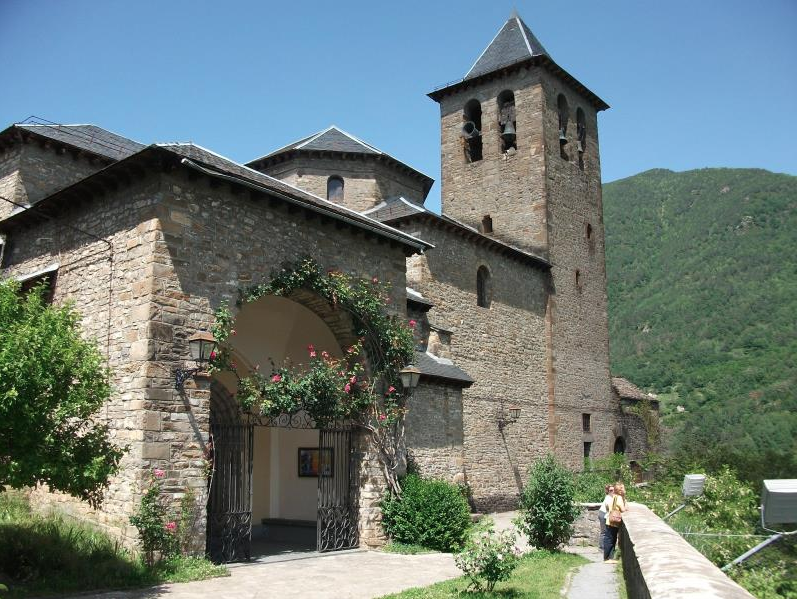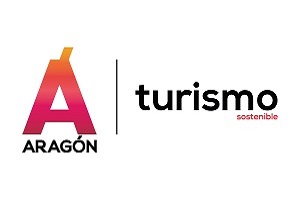The village of Torla, also known as Torla-Ordesa, is the gateway to the Ordesa and Monteperdido National Park, at an altitude of 1,032 metres. This dream place in the province of Huesca still preserves the traditional Pyrenean architecture.
Its proximity to the river Ara and the natural park, as well as its unique and perfectly preserved history make it a perfect place to enjoy a stay surrounded by nature, where you can practice mountain and adventure activities and get to know the culture and heritage of the Aragonese border Pyrenees.
Routes and hiking

Its strategic location makes it the ideal place to stay if you want to get to know the Ordesa and Monteperdido National Park in depth. From here you can follow the famous route of the Cascada de la Cola de Caballo waterfall. It is a 17-kilometre hiking route (approximately 5 hours) that begins and ends in an extensive meadow. It is a route that is well worth the effort because although the Cola de Caballo is the main attraction, the landscapes that can be enjoyed throughout the walk are incredible, from the Gradas de Soaso, the Cascada del Estrecho or the Cascada de la Cueva.
There are many alternative and less difficult walks for the whole family to enjoy, such as the adapted path of the Ordesa Meadow or San Nicolás de Bujaruelo.
In addition, other very interesting routes are the Añisclo Canyon (different difficulties) and pleasant walks such as the route from Torla to the hermitage of Santa Ana or the path from Torla to Broto.
Architecture

Torla has a cultural heritage worth seeing. Its geographical position, between France and Spain, and relatively isolated in the mountains, has allowed its history, traditions and architecture to remain unchanged to this day.
Civil architectural works of great importance, such as mansions from the 13th century to the 18th century with coats of arms of the Infanzones. A 13th century building still stands in the main square. On a stroll through the village you will be amazed by the chimneys (chamineras) with the well-known scarecrows full of stories and fables, by the tizoneras (woodsheds built into the façades), the beautiful windows with geminal arches, the demure little windows or the curious stones above the doors and the beautiful handles.
In the village itself you can visit the church of El Salvador, an ecclesiastical building that apparently also served as a castle. Nowadays, it also houses the Ethnological Museum. The museum’s collection includes objects from everyday life, livestock farming and the exploitation of wood in the high mountains. Located in the old parish house, in its cellars you can see some interesting 16th century mural paintings.
Dances and carnival
Torla’s rich folklore is original. On 12 October, in honour of the Virgen del Pilar, who is also the patron saint of Torla, the young married men of Torla-Ordesa dress up in traditional cloaks and dance three types of dance: the palotiau, the jota and the repatán.
The Torla Carnival, which is held on the Saturday before Ash Wednesday, stands out because the faults and faults of the villagers are represented in a living being, a person of flesh and blood, as opposed to the puppets of Chistau, Belsa or Nerín. The “Carnabal” is represented by one of the young men of the village and its most representative moment is “the trial of Carnabal”.
The pilgrimages of Torla are another of its most unknown traditions. The whole village marches to the hermitage and after celebrating mass, blessed cake is distributed. It is one of the best preserved heritages of Torla, although the five pilgrimages are no longer conserved, the hermitages can be visited and they do maintain the 17th of January (San Antón), the 8th of May (San Miguel), in May with the Second Easter (Santa Elena) and the 13th of December (Santa Lucía).
Aínsa, Boltaña, Fiscal, Broto

On the banks of the river Ara there are numerous beautiful villages that are also worth a visit, with the village of Torla as the centre of operations. Places such as Aínsa, Boltaña, Fiscal and Broto preserve reminiscences of the Middle Ages and the charm of the Pyrenean villages.














